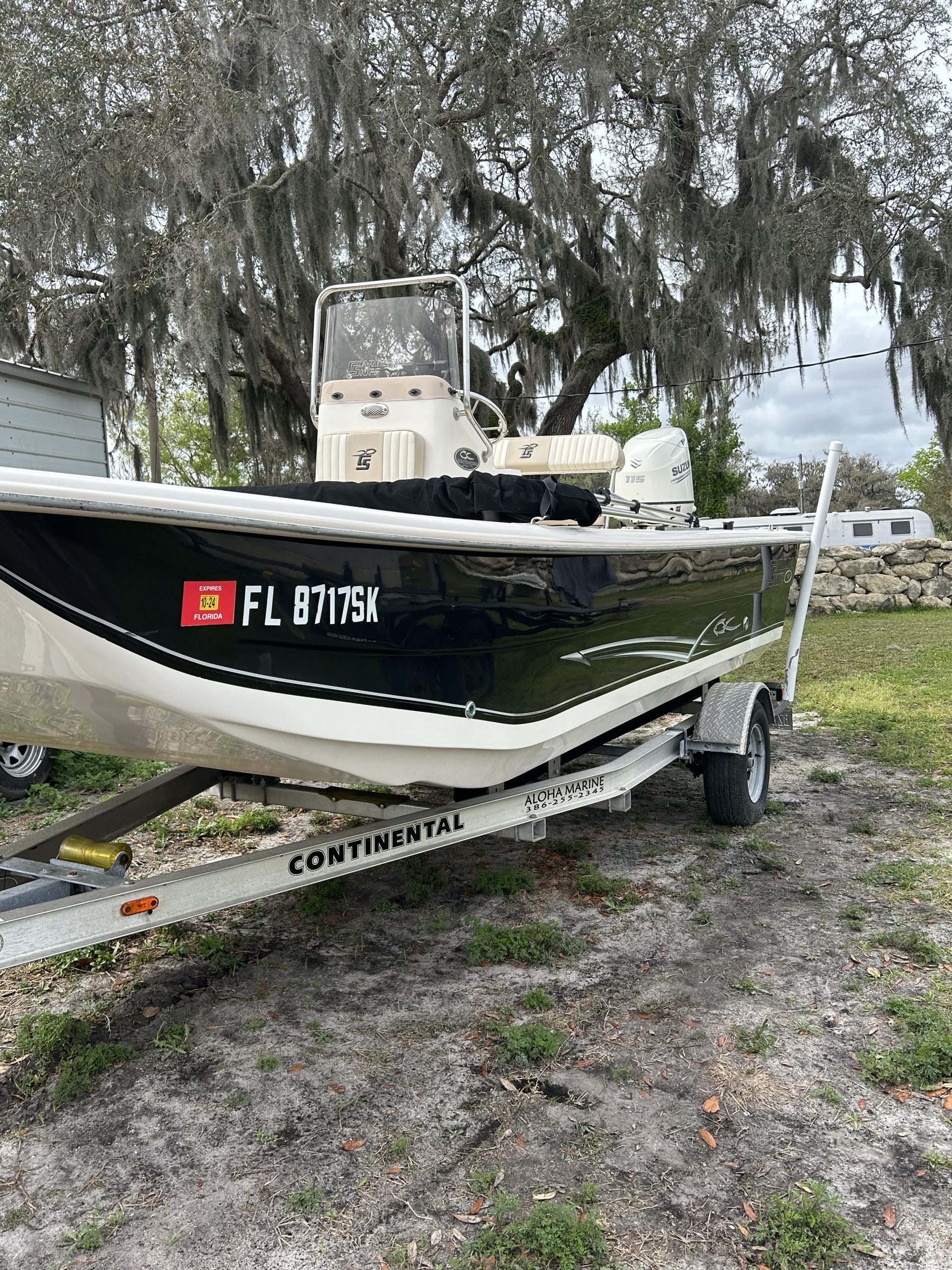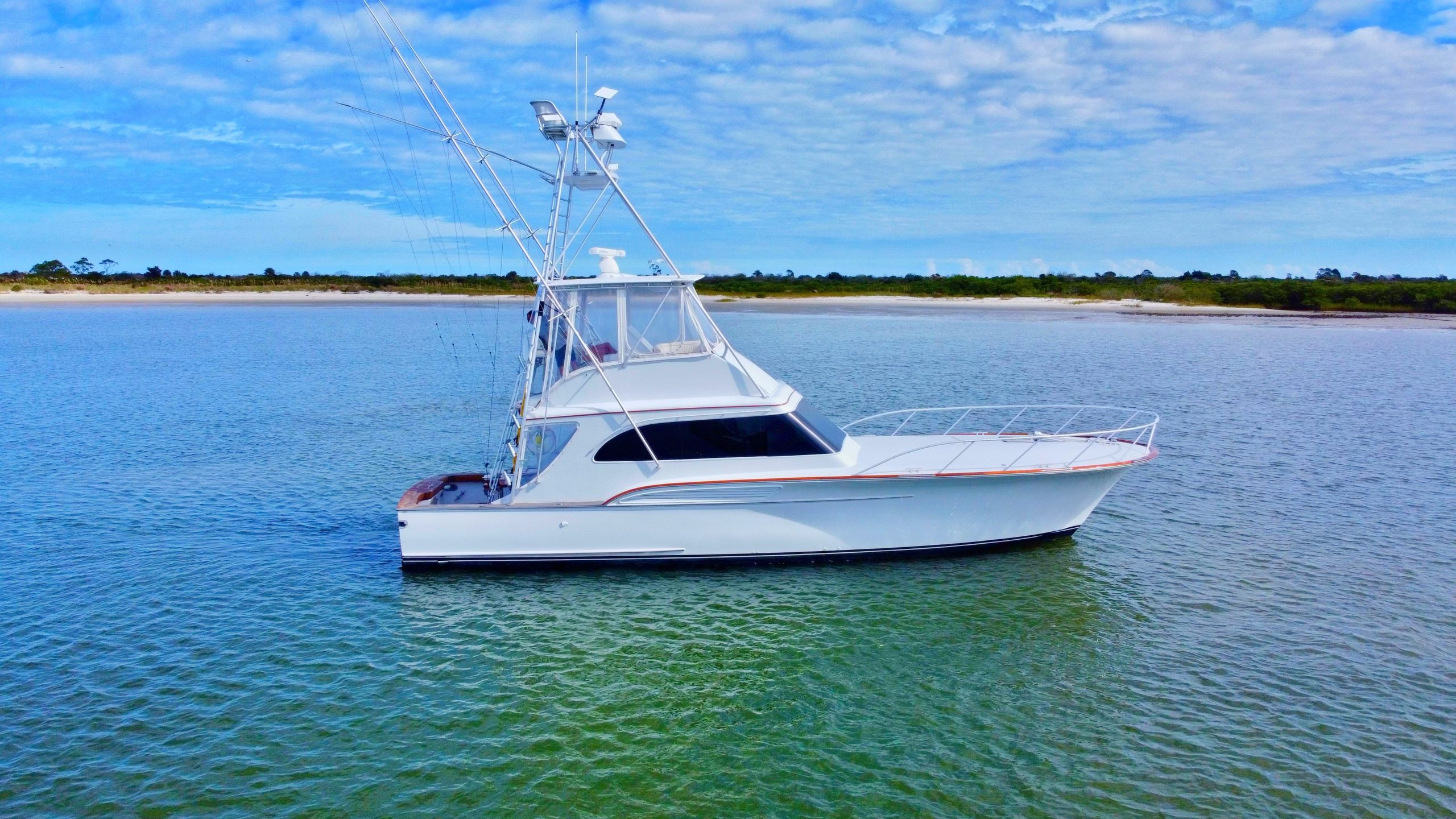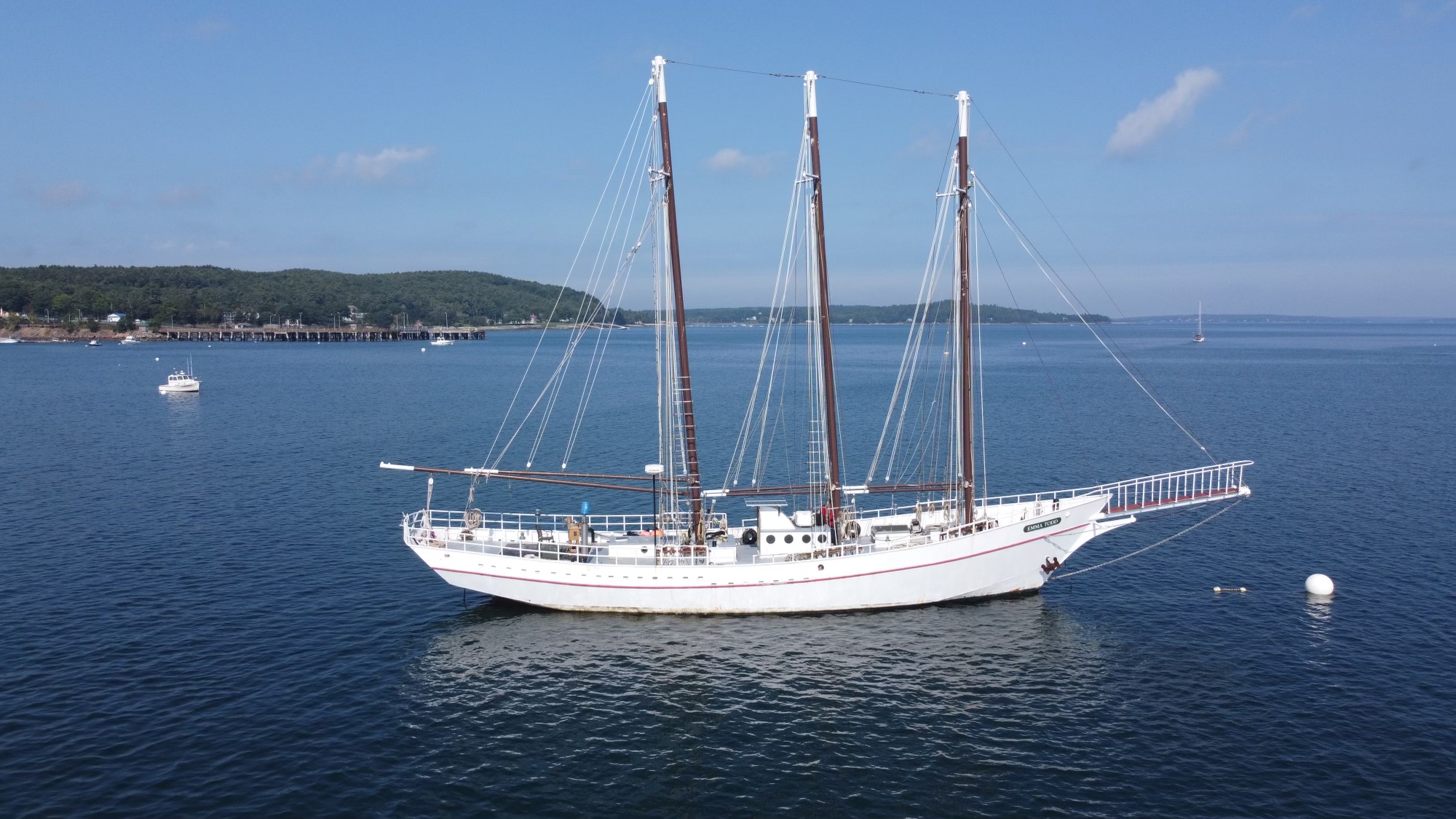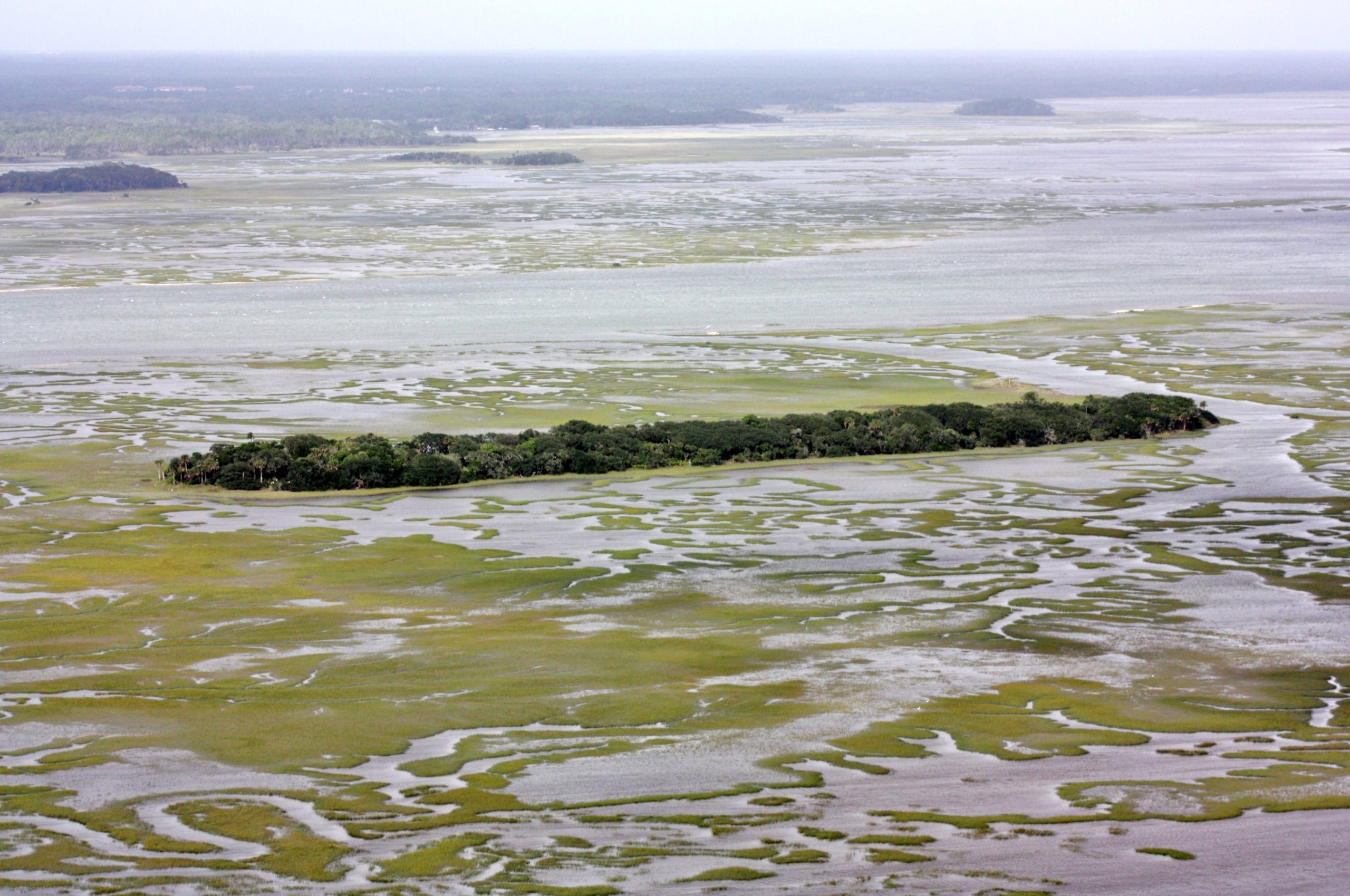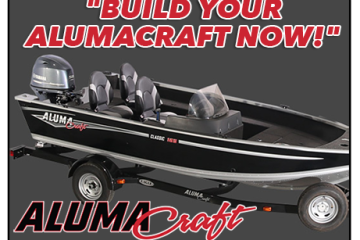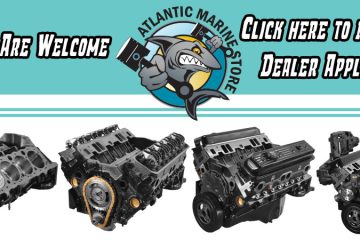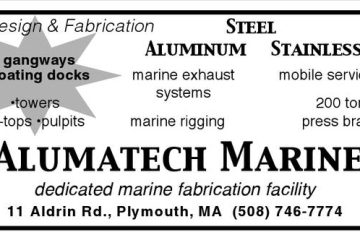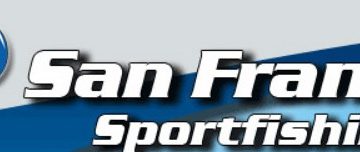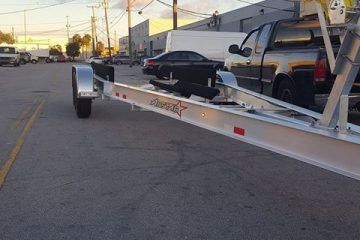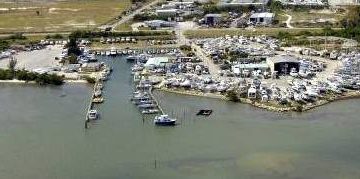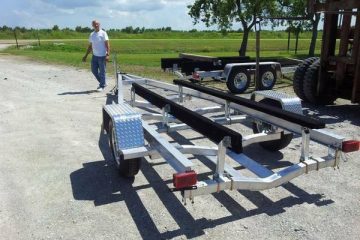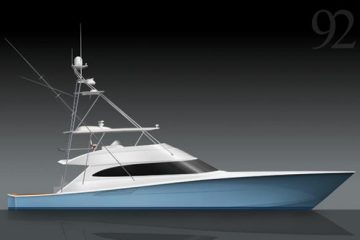

Boston Whaler 260 Outrage By Jack Hornor Revised by BoatUS editors in October 2012
Description
For those of us of a certain age, there are perhaps no more iconic boating ads than those of the 1960s that featured two halves of a Boston Whaler floating, with passengers still aboard, after the boat had been sawed completely in half. Since that time Boston Whaler has built a worldwide reputation for building safe, unsinkable boats with tremendous lateral stability and exceptional load capacities. Unfortunately the same features that lead to these desirable characteristics resulted in a less desirable reputation for a rather punishing ride, particularly in rough water.
The Outrage 260 model, actually 27′ 10″ length overall including the bow pulpit, was introduced in 1998 and remained in production through the 2002 model year. Maximum beam was kept to 8′ 6″ so that the boat could be transported over the road without special permits, although at more than 5,000 lbs. loaded a large vehicle is need for the task.
The Outrage 260 featured Whaler’s newer “deep-V” hull form and a considerably softer ride in rough water than earlier models. However, innovation in design did not cause Boston Whaler to change their commitment to building strong, unsinkable boats. The Outrage 260 is built with a rather traditional layup of chop strand, unidirectional and woven fiberglass fabrics with plastic resin. What sets the Outrage 260, and all Boston Whalers models for that matter, apart is not what goes into their construction, but how the parts are assembled.
Boston Whaler 260 Outrage
Photo by United Yacht Sales
Whalers “Unibond” construction system joins the two fiberglass halves – the outer shell and liner & with closed cell foam in between while the foam is still in a liquid state so that all are bonded into a single foam core hull that is unsinkable even when sawed in half, with the added benefit of being strong and very rigid. The deck is built in a similar fashion and joined to the hull with epoxy adhesive and mechanical fasteners. Hardware is through-bolted where the underside is accessible and tapped into plywood or plastic backing plates molded into the composite where it is not.
Plywood reinforced transoms are susceptible to water penetration and eventually deterioration if motor mounts and other hardware are not properly maintained. And, if the hull is damaged severely enough so that the foam core is immersed in water for a prolonged period of time, water absorption can complicate repair.
The Outrage 260 is a large “center console” sportfisherman. And, from locking stainless steel rod racks beneath the gunnels to a large live-bait well at the port stern, few, if any, fishing features are left out. There are two fish boxes built into the cockpit sole which are 10-inches wide, one foot deep and nearly six feet long. The cockpit is 27 inches deep with a vinyl upholstered bolster at just the right height for the average person to brace against when fighting larger fish. There is a foldaway seat forward of the outboard motor well that stores out of the way when not needed. Forward of the center console there is a bench seat and there are two angled bow seats with storage beneath. The back of the port bow seat lifts to reveal more rod storage. A foredeck locker has plenty of storage for the anchor rode and even a cleat for securing the bitter end of the rode. The anchor is securely stowed into a centerline slot of the bow pulpit.
Whaler has made efficient use every available space although, as with most large center console models, the helm seat is too far away from the helm to allow the operator to steer while seated so Whaler has had the foresight to design the seat to serve a dual purpose as a leaning post.
For safety there are stainless steel handrails around the helm seat, a secure bow rail, and grab handles on each side of the seat bench seat forward of the helm. Decks have an aggressive molded in nonskid surface for secure footing and there are forward, aft and midship mooring cleats.
Whaler has done a good job of providing a usable, if somewhat cramped, head beneath the center console. The head is accessed via a starboard bi-fold door and includes a small sink and storage locker.
Most Outrage 260s are powered by twin 225 hp Mercury OptiMax outboard engines although occasionally other power options will be found. The Outrage 260 will reach an impressive top speed of nearly 50 mph and cruise literally all day long at 30 mph thanks to the 200 gallon fuel tank beneath the cockpit deck. At 30 mph the Outrage 260 has a range of more then 400 nautical miles. Another notable feature is the removable hatch which allows full access to the fuel tank. Now here is a manufacturer who took ABYC’s standard for fuel tank accessibility seriously.
The Outrage 260 will make an ideal bay or coastal fishing boat, but with better than a 400-mile range, a big boat feel and abundant safety features, she is offshore capable and easily reaches the deep-water fishing spots along the Eastern seaboard. I must admit to not being the most avid or accomplished fisherman but it seems to me the Offshore 260 has all the features a 26-foot fishing boat in this size range should have.
Naval architect Jack Hornor was the principal surveyor and designer for Marine Survey & Design, Co., based in Annapolis, MD. He was on the boards of the American Boat and Yacht Council, the National Association of Marine Surveyors, and the Society of Boat and Yacht Designers. He and his wife sailed their Catalina 42, Legacy, based on Maryland’s Eastern Shore.
http://www.boatus.com/boatreviews/power/boston260.asp
Featured Listings
More from BoatNation Ads
Popular Boat Brands
- Albin
- Azimut
- Bayliner
- Beneteau
- Bertram
- Boston Whaler
- C&C
- Cape Dory
- Carver
- Catalina
- Cheoy Lee
- Chris Craft
- Contender
- Formula
- Grady-White
- Grand Banks
- Gulfstar
- Hatteras
- Hinckley
- Hunter
- J/Boats
- Jeanneau
- Lagoon
- Luhrs
- Mainship
- Morgan
- Nordhavn
- Ocean Alexander
- Pearson
- Pursuit
- Regal
- Sabre
- Sea Ray
- Silverton
- Sunseeker
- Tartan
- Tiara
- Viking
- Wellcraft
BoatNation.com is a member of the following associations:
- International Marine Association ®
- Marine Industries Association of South FL
- International Yacht Brokers Association

